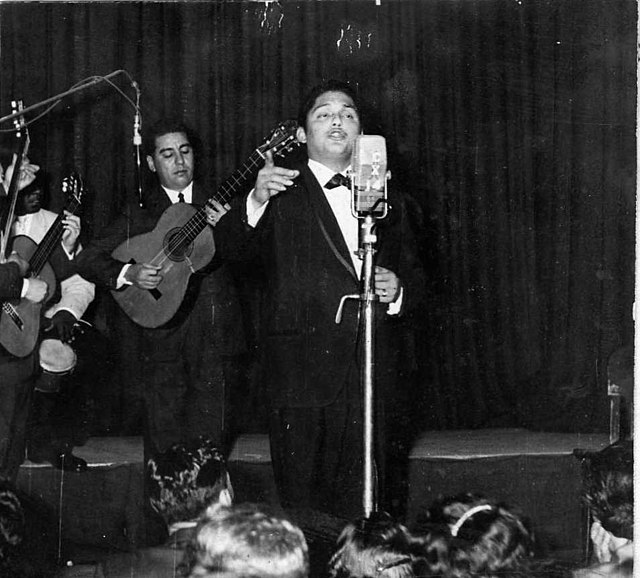Bolero is a genre of song which originated in eastern Cuba in the late 19th century as part of the trova tradition. Unrelated to the older Spanish dance of the same name, bolero is characterized by sophisticated lyrics dealing with love. It has been called the "quintessential Latin American romantic song of the twentieth century".
Pepe Sánchez (guitar, left) and Emiliano Blez (tres) with three singers (standing)
Julio Jaramillo, a prolific Ecuadorian bolero singer and recording artist who performed throughout Latin America.
Trova is a style of Cuban popular music originating in the 19th century. Trova was created by itinerant musicians known as trovadores who travelled around Cuba's Oriente province, especially Santiago de Cuba, and earned their living by singing and playing the guitar. According to nueva trova musician Noel Nicola, Cuban trovadors sang original songs or songs written by contemporaries, accompanied themselves on guitar, and aimed to feature music that had a poetic sensibility. This definition fits best the singers of boleros, and less well the Afrocubans singing funky sones or even guaguancós and abakuá. It rules out, perhaps unfairly, singers who accompanied themselves on the piano.
Casa de la Trova, Santiago de Cuba
The four greats of the trova from left: Rosendo Ruiz, Manuel Corona Sindo Garay, Alberto Villalón
Compay Segundo at the Hotel Nacional de Cuba





